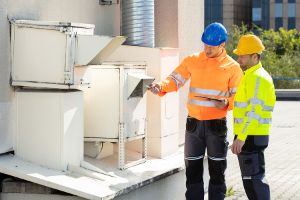
In our increasingly industrialized world, the importance of identifying and managing environmental risks cannot be overstated. Environmental risk assessments are crucial for safeguarding public health and ensuring the longevity of our ecosystems. M3 Environmental LLC, headquartered in Monterey, CA, specializes in recognizing and mitigating potential hazards presented by various environmental factors and activities.
What Is an Environmental Risk Assessment?
An environmental risk assessment (ERA) as defined by the EPA examines potential harm to humans caused by chemical, physical, or biological substances in the environment. It involves a systematic approach to identifying hazards, evaluating the risks associated with those hazards, and determining appropriate ways to manage or mitigate those risks.
4 Key Components of Environmental Risk Assessment
1. Hazard Identification
This phase involves spotting potential sources of environmental harm, such as pollutants, chemicals, or physical dangers. Effective hazard identification is foundational in the risk assessment process.
2. Risk Analysis
Risk analysis assesses the probability and consequences of identified risks. It takes into account the severity of each hazard and the likelihood of adverse effects.
3. Risk Evaluation
Here, the analyzed risks are compared against risk criteria that might be based on regulatory standards or public health requirements. This step determines the significance of each risk.
4. Risk Mitigation
In this final phase, strategies to reduce, manage, or eliminate identified risks are developed and implemented. This can include engineering controls, policy changes, or protective measures.
Why Conduct An Environmental Risk Assessment?
Understanding the need to conduct an ERA can help businesses and communities create safer environments. Here are some compelling reasons:
- Regulatory Compliance: Adhering to local, state, and federal environmental regulations to avoid legal repercussions.
- Public Health Protection: Minimizing the risks of exposure to hazardous substances that can affect public health.
- Environmental Preservation: Protecting ecosystems from damage that can lead to biodiversity loss or ecosystem dysfunction.
- Business Continuity: Identifying potential environmental risks that could disrupt operations and profitability.
Hazard Recognition In Different Environments
The process of recognizing hazards varies significantly based on the environment being assessed—whether it’s industrial, rural, or urban.
- Industrial: Chemical spills, emissions, and waste disposal issues.
- Urban: Air quality, water contamination, and noise pollution.
- Rural: Pesticide usage, water usage for agriculture, and natural habitat disruption.
5 Steps To Conduct An Effective Environmental Risk Assessment
- Data Collection: Gathering data on potential environmental hazards.
- Hazard Assessment: Analyzing the nature and extent of the hazards.
- Exposure Assessment: Evaluating who or what may be exposed to potential hazards and to what extent.
- Risk Characterization: Combining data from hazard and exposure assessments to estimate the health risks.
- Decision-Making: Using the assessment to make informed decisions on how to manage or mitigate risks.
Integrating Continuous Improvement
Regularly updating risk assessments ensures they reflect current conditions and incorporate the latest scientific knowledge and regulatory updates. This practice, known as continuous improvement, is vital for environmental risk management.
Environmental Monitoring Techniques
- Remote sensing for tracking pollution levels.
- Bio-monitoring using living organisms to gauge the health of environments.
- Chemical testing of air, soil, and water samples to detect harmful substances.
Environmental Risk Communication
Communicating the findings of risk assessments to stakeholders, from company executives to the general public, is crucial. Transparency builds trust and fosters cooperation in implementing risk mitigation strategies.
Addressing Public Concerns Through Environmental Consulting Services
Professional environmental consultants play a pivotal role in conducting comprehensive ERAs, advising on mitigation strategies, and ensuring that businesses and communities can make well-informed decisions about environmental safety measures.
The Role Of Public Health Advocacy In Environmental Risk Management
Public health advocates emphasize the importance of preventive measures and the public’s right to live in a safe and healthy environment. They work alongside environmental experts to push for stronger regulations and public awareness campaigns.
Safeguarding Our Future With Comprehensive Risk Mitigation
For communities in Monterey, CA, and beyond, undertaking an environmental risk assessment is a proactive step towards a safer and more sustainable future. M3 Environmental LLC stands ready to guide you through this complex process, ensuring that environmental risks are not only identified but effectively managed and mitigated. Together, we can protect our health and the environment for future generations.





